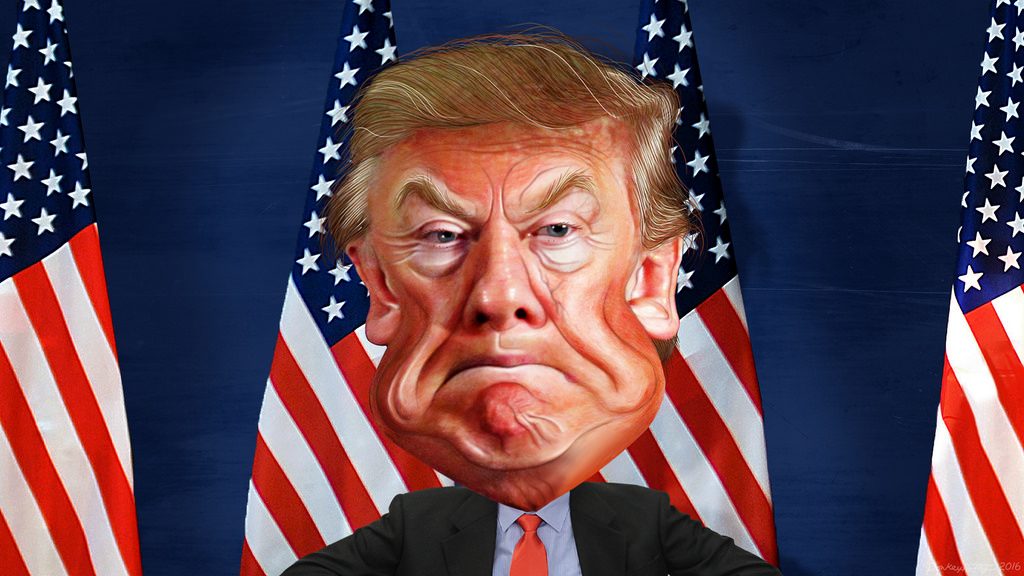The days of a US administration that engaged substantively with Southeast Asia are soon to be over, writes Tom Pepinsky.
Defying the expectations of nearly every US pollster and most mainstream pundits, Donald Trump has defeated Hillary Rodham Clinton in the 2016 presidential election.
As Americans adapt to the reality of Mr Trump’s victory, analysts are devoting particular attention to his foreign policy plans. For readers of New Mandala, and for half a billion Southeast Asians, the urgent question is what Mr Trump’s presidency will mean for Southeast Asia, and for US relations with the region.
Answering that question requires an understanding of the powers that US presidents have. Like in many other presidential systems, the US president does not make laws. Doing so requires legislative action. On issues of foreign policy, however, the US president has significant individual discretion to build a foreign policy team of his or her liking, and to pursue a relatively independent foreign policy accordingly.
On foreign policy issues, Mr Trump’s campaign rhetoric was bombastic, aggressive, and often self-contradictory. He has encouraged nuclear proliferation in Northeast Asia and the Middle East. He favours policies that could start a trade war with China. He has promised to build a wall with Mexico, and suggested policies that would abrogate US treaty commitments with NATO. His personal infatuation with Russian president Vladimir Putin is simply bizarre.
If there is any unifying theme, though, it is a move towards isolationism. His foreign policy outlook, as sketchy as it might be, is one that prioritises military strength, opposes foreign military adventurism, redresses what he perceives to be exploitative trade relations, and is profoundly wary of immigrants, especially Muslims and Mexicans. It is a view that resonates with the roughly one-quarter of the US electorate who voted for him.
How would such a US foreign policy affect Southeast Asia? Before proceeding, a very significant caveat is in order.
Prior to Tuesday evening, most American pundits and foreign policy analysts had not taken a Trump presidency seriously enough to consider what he might do in office, and especially what his foreign policy team might do. To my knowledge, there was hardly any of the normal jockeying among the Washington foreign policy establishment to shape Mr Trump’s foreign policy platform. This jockeying is only now happening; the same is true, incidentally, for his national security team.
This means that any predictions are tentative, and should be taken as such. They are the best that can be done in a situation with no precedent and fast-moving developments from a candidate who is both secretive and mercurial. With this caveat aside, two scenarios seem especially important to consider.
One is a scenario in which Mr Trump pursues his isolationist line that asks Japan and South Korea to take greater responsibilities in regional security in Northeast Asia. This would have implications for regional security across the Asia-Pacific. In such a scenario, Southeast Asian countries—treaty allies (Philippines, Thailand) and new security partners (Vietnam) alike—might expect similar treatment, asked to shoulder a greater burden in providing for their own security.
But because Southeast Asian countries have weaker militaries and are more dependent on trade with China, their incentives would be to avoid confrontation with a far more powerful regional hegemon if they do not believe that a Trump administration would defend their strategic interests.
Another is a scenario in which Mr Trump respects security policy precedent but pursues a more aggressive anti-China stance on economic matters. Trade barriers, for example, might interrupt trans-Pacific trade flows. The consequences for Southeast Asia are hard to predict, but could include either a regional slowdown in trade, or alternatively an ever greater role for Southeast Asia as a trading partner for China.
Separate from these scenarios, and focusing on economic matters, what seems more likely is the end of the Trans-Pacific Partnership, which was opposed by both Trump and Clinton during the general election campaign. This would be a major setback for its signatories in Southeast Asia (Brunei, Malaysia, Singapore, and Vietnam). It would force these countries to rebalance their trade relations, perhaps with advanced economies like Japan and the EU, or perhaps with rising powers like China and India.
Some analysts privately believed that TPP, like NAFTA and other trade agreements, might actually survive under a Trump presidency, on the notion that US presidents tend to favor trade once in office, and that Mr Trump, a wealthy Republican, simply does not care about TPP but was willing to use it to win an election. Taking his word at face value, however, suggests a decisive move towards protectionism. Withdrawal from TPP is an agenda item for his first 100 days in office.
The frustrating conclusion is that it hard to know what the next four years will mean for Southeast Asia with Mr Trump in office. Because Southeast Asia presents few acute security or economic challenges at the moment, the region may be fortunate enough to see business as usual, with career diplomats in ambassadorial positions, trade and investment continuing, military-to-military cooperation as before.
But even if business continued as usual, the scenarios outlined above would still have indirect effects on Southeast Asian countries’ security and economic interests.
One thing is almost certain, however: the days of a US administration that engaged substantively with Southeast Asia are soon to be over. President Barack Obama’s “Pivot to Asia” meant that his administration considered the region to be one of core strategic interest. Given his personal ties to Indonesia, Southeast Asia has figured relatively prominently.
It is hard to imagine that Mr Trump cares enough about Southeast Asia to match President Obama’s level of engagement.
Tom Pepinsky is Associate Professor of Government at Cornell University and blogs here.
 Facebook
Facebook  Twitter
Twitter  Soundcloud
Soundcloud  Youtube
Youtube  Rss
Rss 